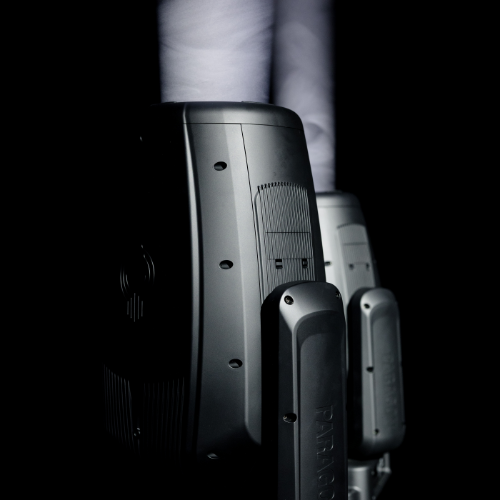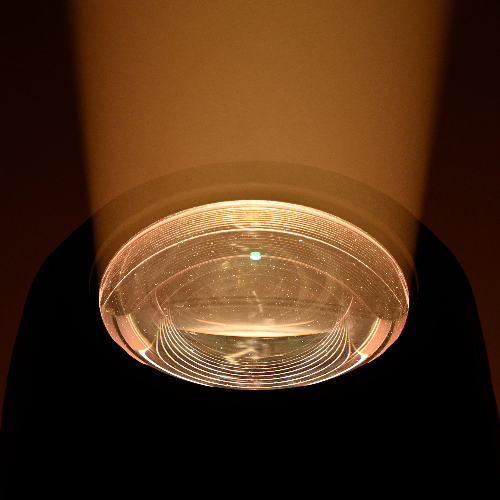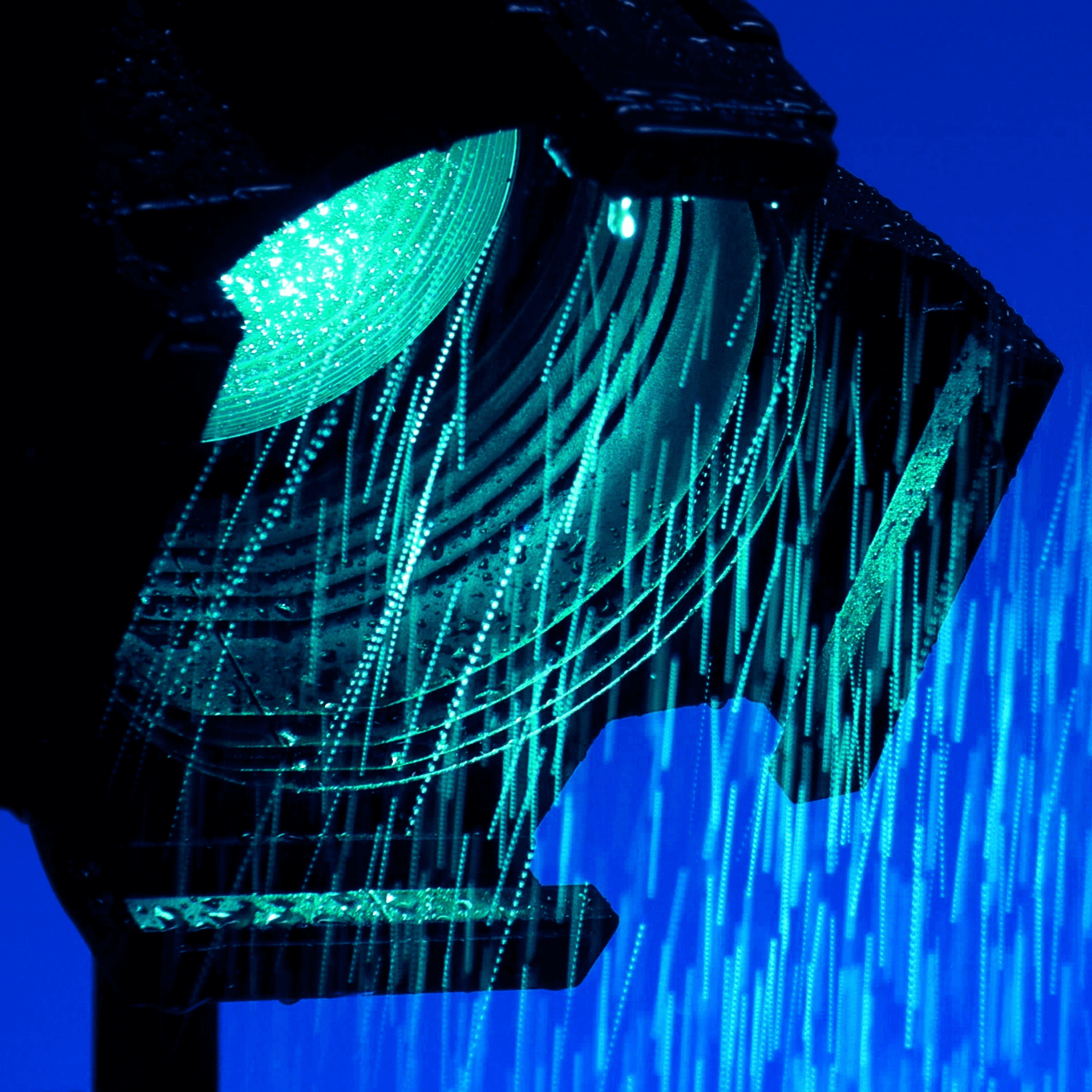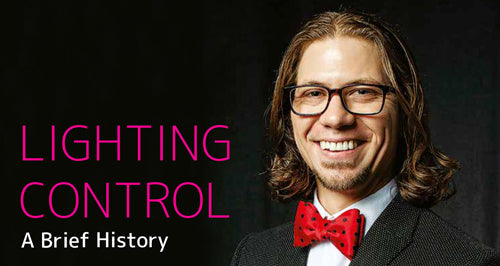Simplified lighting control and manipulation has become second nature to us, but it certainly wasn’t always that way.
Today, we can effortlessly control our lighting with a simple command like, ‘Alexa, turn off the table lamp.’ We've grown accustomed to the ease with which we can adjust our lights, whether through a console or a computer screen. This level of simplicity and control has become second nature, but it's important to remember that it wasn’t always this way.
The advent of electronic lighting control in the late 1950s marked a significant milestone in the evolution of lighting technology. The key catalyst for this transformation was the development of electronic dimming technology. Before this breakthrough, lighting systems were managed using physical resistance dimming systems, often requiring a team of operators. The new electronic systems introduced an analog control method, typically a 0-10v signal, which was adjusted using sliders or faders on a control board. This adjustment directly influenced the lighting fixture's output power level, as interpreted by the dimmer.
Eventually, designers created what is called a two-scene preset board. While these consoles were a significant improvement, they had their limitations. They consist of two banks of faders, one for each ‘scene.’ The two banks each contain a fader for every dimmer in the lighting system. The lighting settings can be adjusted and set in one bank, and the other allows the operator to preset the settings for the next scene. However, when it comes time to switch scenes, the operator must adjust what is called ‘crossfaders.’ These are pairs of inversely proportional faders. One is at full intensity when in the up position, while the other is at full when in the down position. When the operator moves these two faders, the corresponding scene fades in or out, depending on the direction in which the crossfaders are moved. The crossfaders can also be moved independently of one another, allowing the operator to produce various fade effects. While innovative, this system still required significant manual intervention and was unsuitable for rapid scene changes.

*Strand System PR, From Frederick Brown Collection, theatrecrafts.com
While this allowed for much more creative control of a lighting system, it still took an operator time to preset the following scene. It would be challenging to achieve if a series of scenes needed to occur rapidly. Eventually, an expansion of the two-scene preset was created. It was referred to as a preset panel. This system was based on the same concept as the two scenes but allowed for as many as ten different scenes to be set in advance. Two operators would control the system; one would put the scenes on the panel while the other controlled the operator’s board, which had buttons to assign scenes to different crossfaders. This system was not nearly as standard as the two-scene preset due to its size and cost. Two-scene preset consoles are still available today, making an excellent, low-cost option for small or non-complex lighting systems.

*Strand Threeset, From Alan Luxford Collection, theatrecrafts.com
With the increasing affordability of computer technology, lighting companies began developing computerized controllers. These controllers revolutionized lighting control by allowing all lighting presets to be set beforehand and recalled later when needed—the first versions of these consoles utilized punch card memory systems. The lighting was manipulated through an interface with faders and buttons, similar to how we control them today. When the lighting was adjusted as desired, a punch card would be created for future recall. Each preset in the show had its punch card. Despite the need for numerous punch cards, this system allowed for more complex show control, heralding a new era in lighting technology.

* Strand Memocard, From Alan Luxford Collection, theatrecrafts.com
In the 1980s, digital memory became available, so lighting consoles could store multiple presets onto a disk for future recall. Lighting presets could be stored on one disk and loaded when needed. If the show was extensive, sometimes two disks would be required, and at the halfway point in the show, the second half of the presets would be loaded into the console.

*LS-8 Lighting Console, the first computerized memory board on Broadway, A Chorus Line Revisited - Linda Essig (Theatre Design & Technology) (December 1998)
Despite all this innovation in control interfacing, we still relied on a 0-10v analog signal to transmit the information. The other issue was that the actual 0-10v signal needed to be standardized. Some manufacturers used other voltages or polarities, so interfacing one company’s dimming to another company’s controller was difficult or impractical. In the mid-1970s, a standard 0-10v signal was agreed upon, so cross-compatibility was possible. One big downfall of this method remains: 0-10v requires a wire from the console to be sent to every dimmer. As the systems grew more extensive, they became pretty complex infrastructures. In the 1980s, a technology called multiplexing was developed. Its primary use was in the communications industry, but lighting manufacturers could utilize it to send lighting control information down a two-wire (plus ground) cable. This helped eliminate the extensive infrastructure required for the 0-10v control. Still, each manufacturer created their protocol version, so we again ran into interoperability issues. Although the size of the cable needed to send the signal decreased, we were still limited on the size of the system that multiplex could support, typically 96 channels.
In the 1980s, it was decided that we again needed a more universal control protocol to handle the larger lighting systems being created. The Engineering Commission of the USITT (United States Institute for Theatre Technology) organization developed and released the DMX512 protocol in 1986. It has since been revised and updated, but the basic framework remains the same today. DMX is a digital signal that can include more information than previous methods. One cable of DMX can transmit a ‘universe’ of data. One ‘universe’ of DMX contains 512 channels of control.
The use of DMX coincided with the development of various intelligent or multi-parameter devices in a lighting system. A dimmer is a single-parameter device occupying only one fader or control channel. Other devices like LED fixtures or moving lights are multi-parameter devices; they require more than one channel of DMX to control. The need for a seemingly more complex lighting control interface also comes with those additional channels. That complexity saves us time and effort when managing the various features we may need.
The lighting console has evolved from a large bank of faders to control each light to a large interface of buttons and encoders. This interface type makes it easier to manipulate complex parameters like a fixture's movement or an LED's fine color adjustment. Faders cannot be as precise as we need for those fixtures. However, the learning curve to fully understand the control method of a lighting console is becoming steeper. Some manufacturers have utilized our familiarity with touchscreen interfaces to create more graphic and interactive control devices. Lighting consoles now come in all shapes, sizes, and capabilities. The options are endless, and deciding what type of lighting console would work best for you and your facility can be daunting.

Visit our Learning Center page to stay updated with Elation's latest advancements in lighting technology, or schedule a demo to see how we can illuminate your creative vision.



